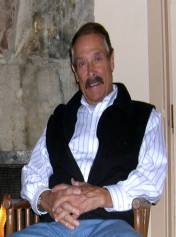| |
There
was never a day during my tour as Commanding Officer
that I was not proud and honored to be a member of the
Devil Dog team.
Even during days of great adversity I was always
given a reason to be thankful.
The dedication of this young and not so young
group consistently overcame every challenge and
continued the BELLEAU WOOD tradition as ship that could
be counted on to consistently meet or exceed every
mission requirement.
That said, there are two periods of performance
that are indelible and as vivid today as when they
happened.
1.
During the transit to our new homeport of Sasebo,
Japan we stopped in Pearl Harbor for some much
anticipated Hawaiian Island liberty.
The ship was refueled soon after arrival and a
large liberty party had made its way ashore for local
activities and organized tours.
As XO Bob Annis and I were finishing up the daily
routine and preparing to head for the O’Club pool, we
received an emergency sortie order to evade Hurricane
Iniki which was heading toward Oahu.
In a shorthanded situation, the engineers did an
outstanding job lighting off one space and then going to
bare minimum watch standers while lighting off the
second boiler. Recall
efforts brought many key personnel back but the watch
bill for getting underway was innovative to say the
least. By
the time we had cleared the channel the seas were
impressive and on the beam as we made best speed to the
eastern side of the big island to wait for Iniki to
pass.
Hurricane
Iniki veered west and struck the Island of Kauai on 11
September 1992 as the most devastating storm in Hawaiian
history. It
caused more than 2 billion dollars in damage.
As we listened to radio reports it became
apparent that we would be needed in the subsequent
relief effort. When
we moored to the pier on our return, the Joint Task
Force had already put a great deal of material in place
for loading. During
the return transit to Pearl, all departments had
expertly developed a plan to expedite this process.
The loading was complex in that much of the
material and vehicles were not designed for amphibious
or vertical transport.
Immediately after loading, we made preparations
and got underway for Kauai.
On arrival off Nawiliwili Harbor we could see the
area around Lihue and it looked like a nuclear weapon
had been dropped on the city.
Using Marine helicopters and organic LCU assets,
the supplies started flowing in record fashion.
Vehicles, field hospital equipment, water
purification stations and a myriad of other relief
materials made their way ashore.
BELLEAU WOOD air controllers augmented Lihue’s
airport tower to assist with the tremendous influx of
air traffic evacuating people and delivering relief
supplies. In
total, three shiploads of much needed supplies and
equipment were delivered to Kauai on a round robin basis
between Pearl Harbor and the island.
Every shipload of material was offloaded in less
than one day. For
the better part of a week, the crew of BELLEAU WOOD
worked around the clock to accomplish the mission.
I never heard any grousing about lost liberty.
The Sailors and Marines responded to people in
desperate need in a heroic fashion.
At 2200 when the last offload operation at
Barking Sands was finished, the ship proceeded on track
for Sasebo and was joined by USS CIMARRON for a three
plus hour underway replenishment, finishing in the early
morning hours. For
its effort the crew was awarded the Humanitarian Service
Medal. I believe it was one of the ship’s finest hours.
2.
In November 1992, BELLEAU WOOD was designated as
the ship that would participate in the final drawdown
and withdrawal from the U.S. Naval Base in Subic Bay,
RP. This would mean more than three weeks moored to the pier at
the former NAS Cubi Point.
Having been stationed there for two years, I told
the crew it could be blessing or a curse.
Liberty in the Philippines was highly sought
after but the worldwide visibility of this operation
required a zero-defect performance from the standpoint
of conduct. The
BELLEAU WOOD Navy/Marine team performed in superb
fashion. Working
closely with Admiral Tom Mercer and his staff, each base
function was sequentially rolled to the ship.
We became the base hospital, public works,
barracks, BOQ, post office and so on. This process continued until 24 November 1992 when a Marine
color guard from the Devil Dog lowered the United States
flag and we boarded a bus for the trip to the pier.
We stopped at the gate between Subic and Cubi
Point to pick up the Marine sentry.
He made a last entry in his logbook, tucked it
under his arm and boarded the bus.
The Olongapo Mayor and head of the Subic Bay
Metropolitan Authority, Mr. Richard Gordon, an official
delegation from the city of Olongapo and a large group
of citizens came to the pier to bid farewell. Fifteen minutes ahead of schedule, the last line was taken in
ending 94 years of continuous United States military
presence in the Republic of the Philippines.
As we backed away from the pier the rails were
manned by Sailors and Marines while the strains of
“I’m Proud To Be An American” played loudly on the
ship’s PA systems.
There were few dry eyes on either side of the
equation and mine were not among them.
The crew was exemplary by every measure and
performed this complex task in truly outstanding
fashion. For
many of us, the sight of Grande Island passing down the
port side and Subic Bay fading into the distance was an
unforgettable experience and one of the proudest moments
of my life.
CAPT(Ret.)
Douglas J. Bradt, USN
|


